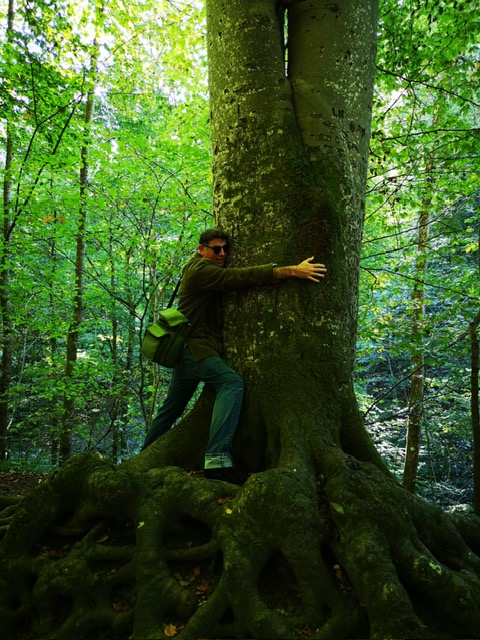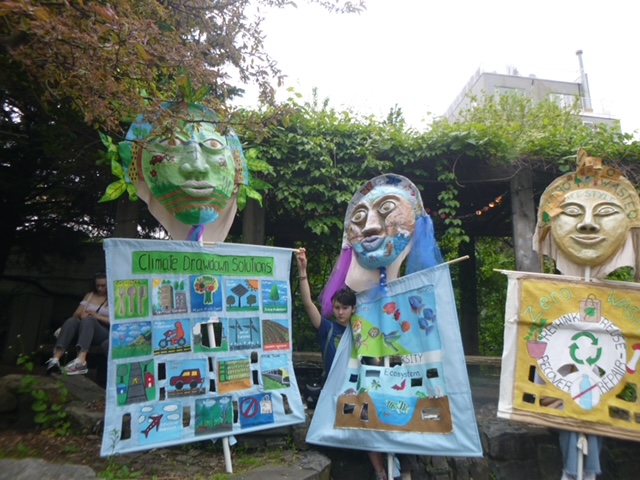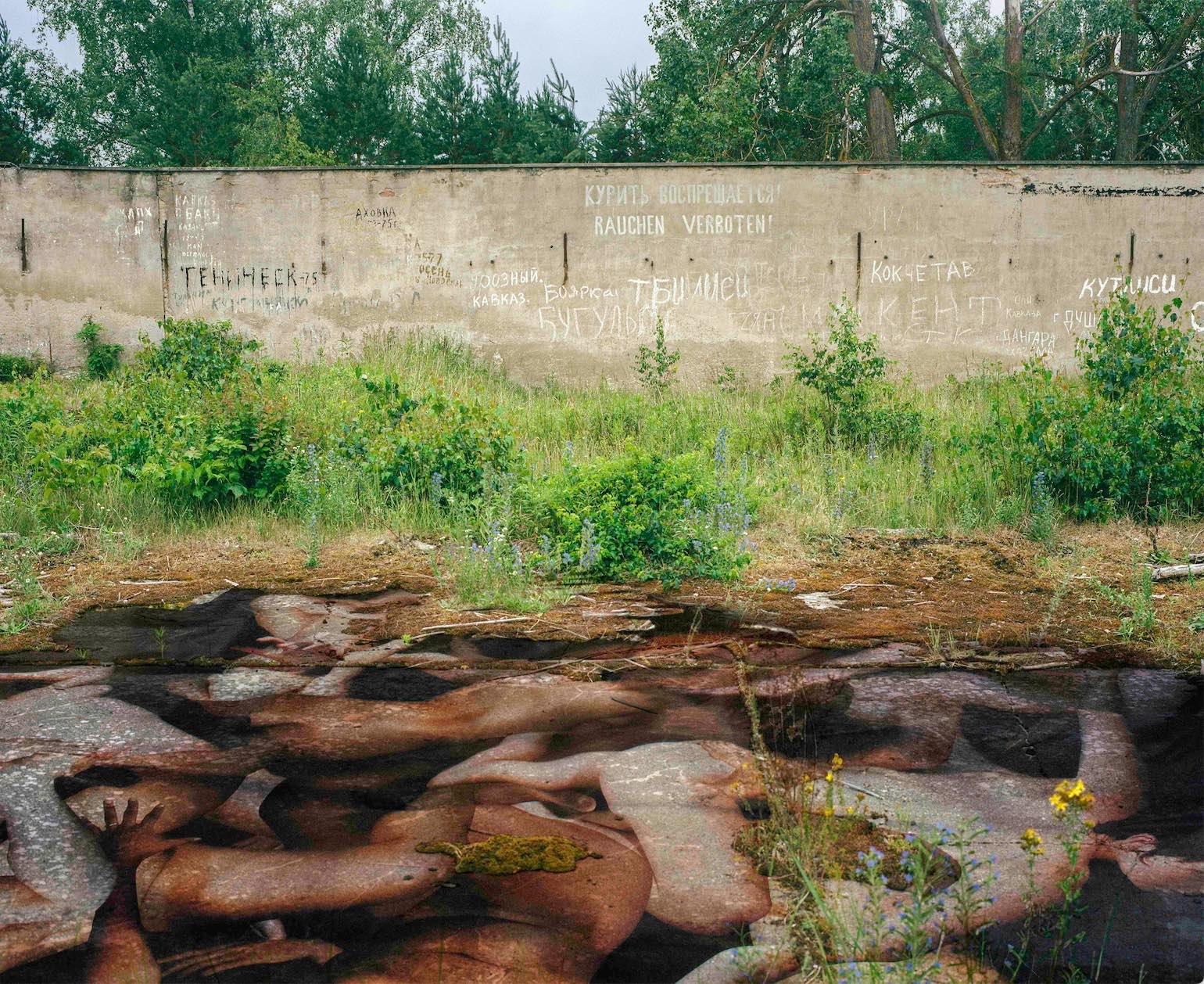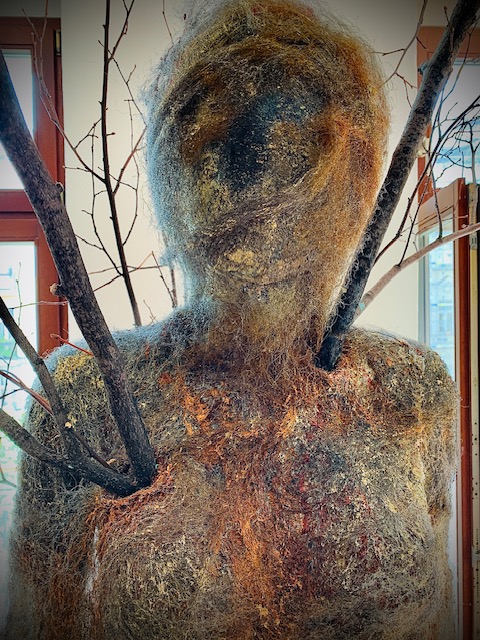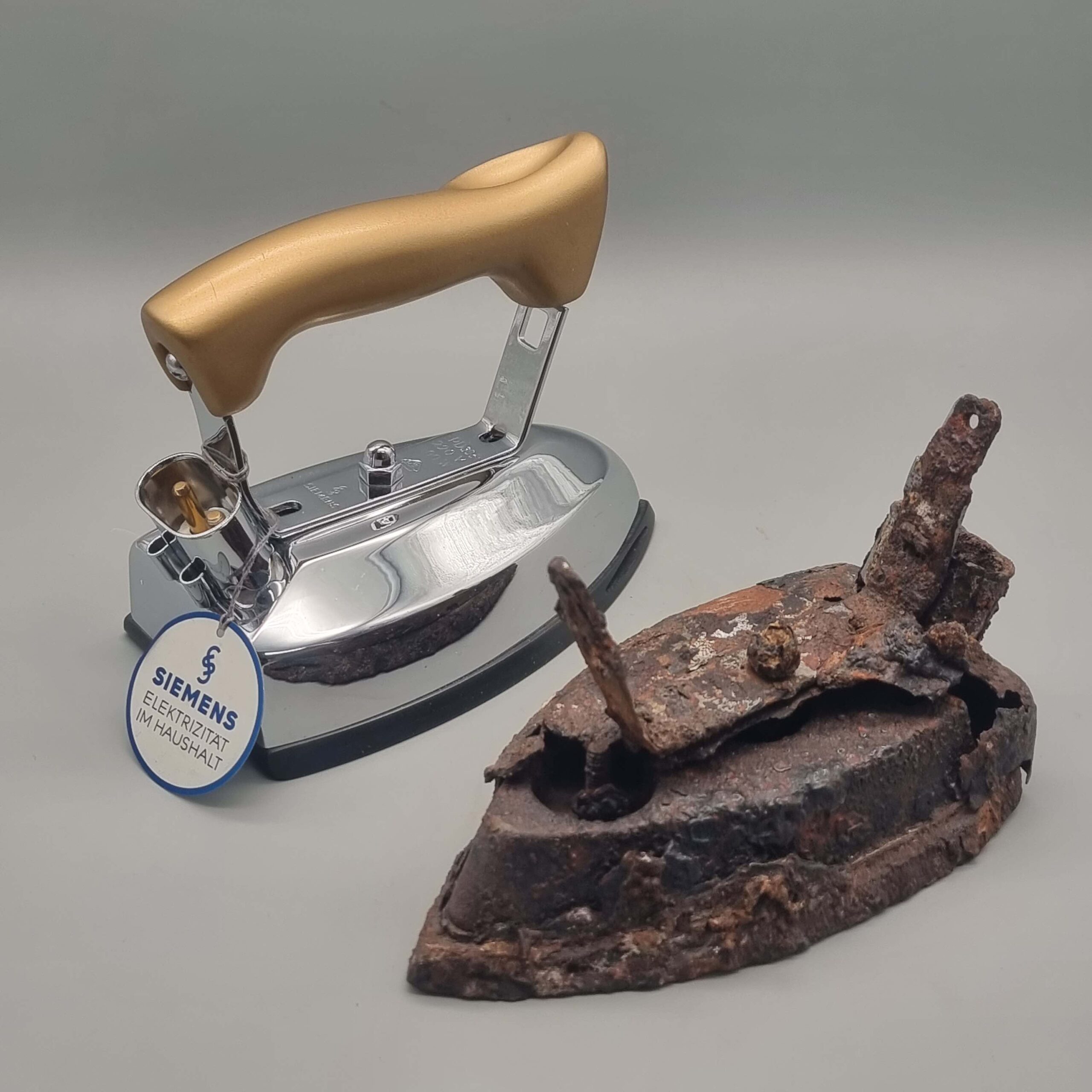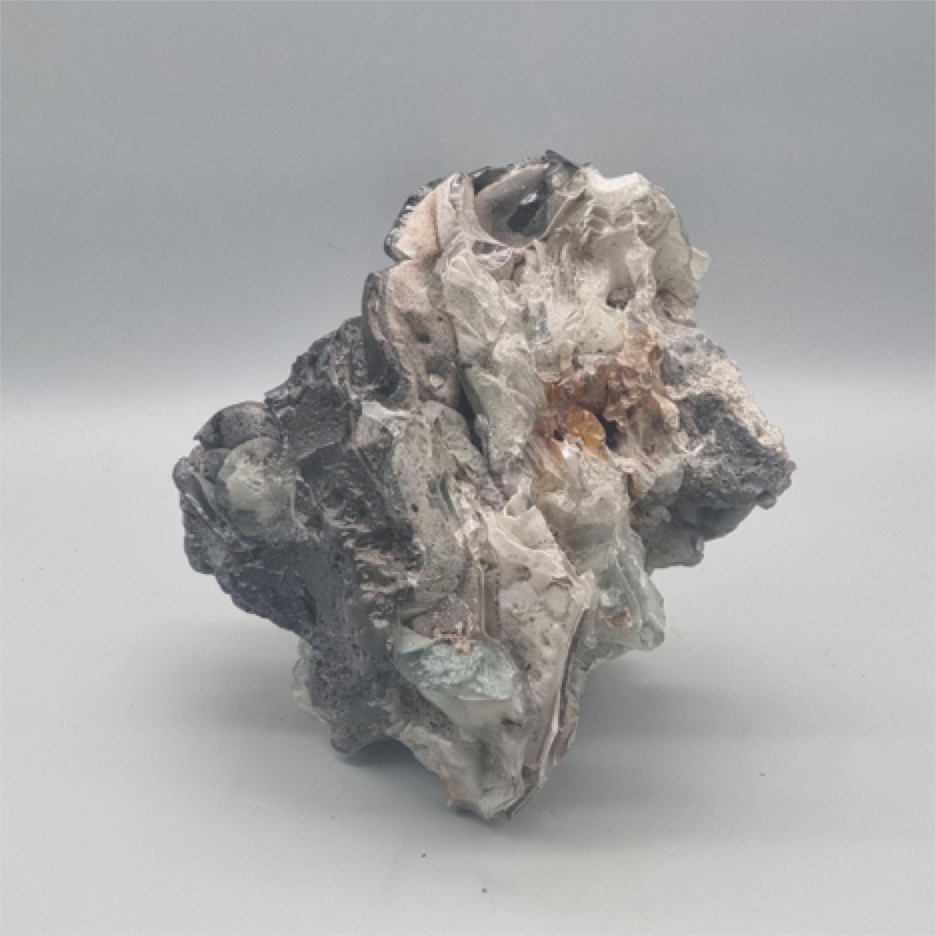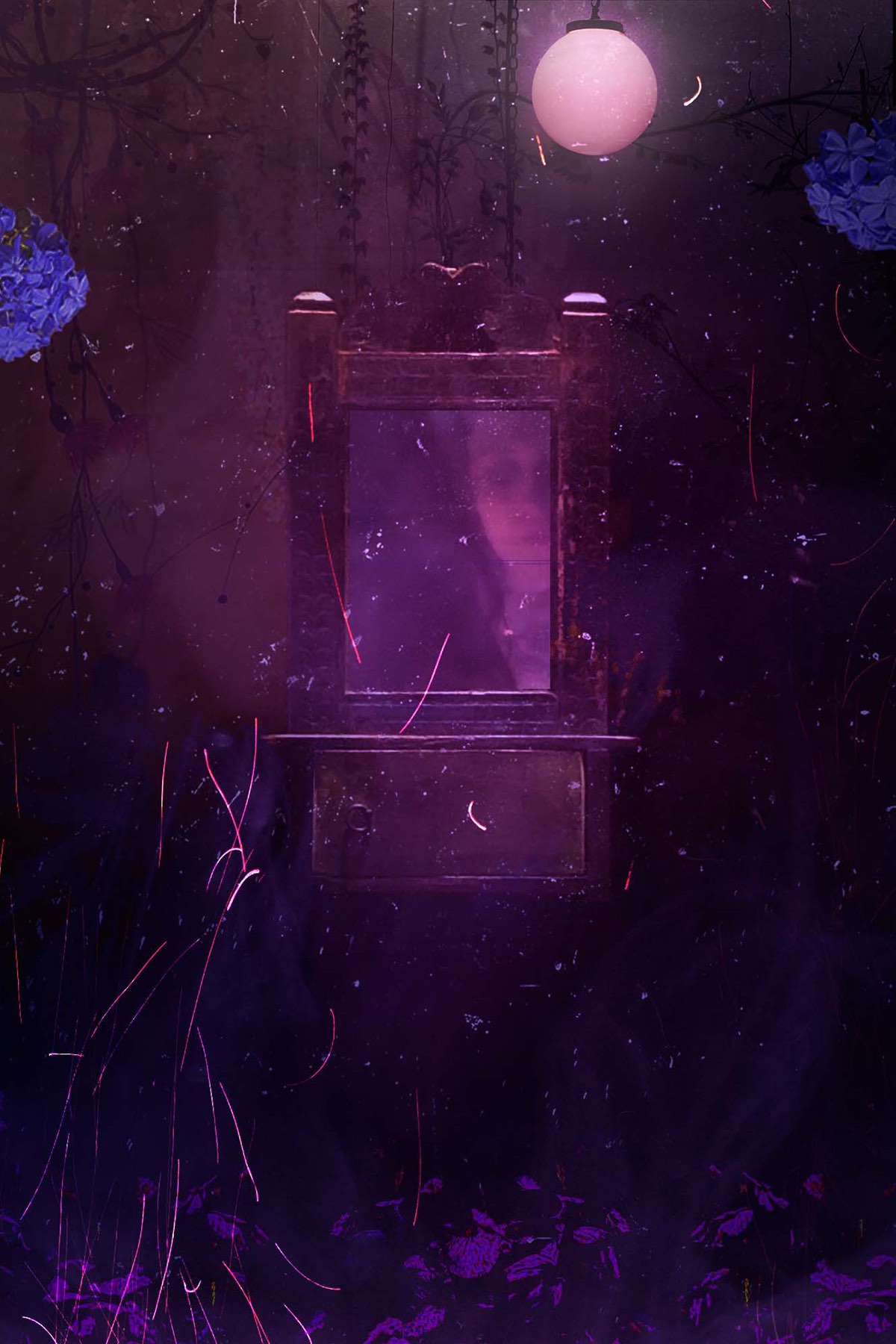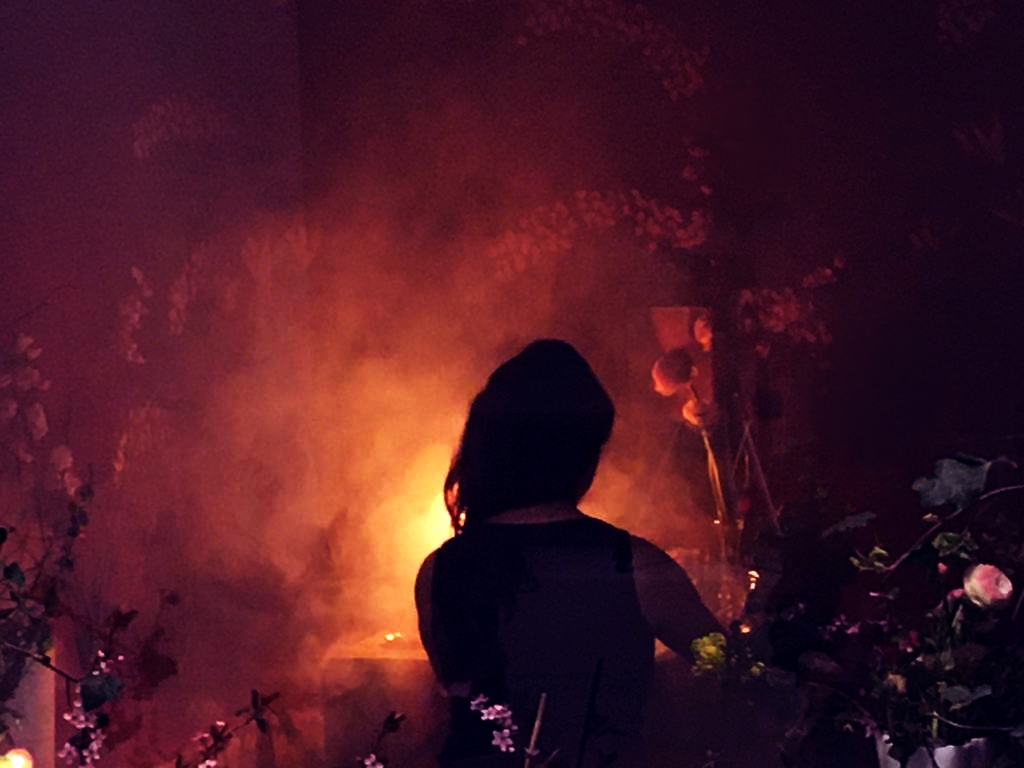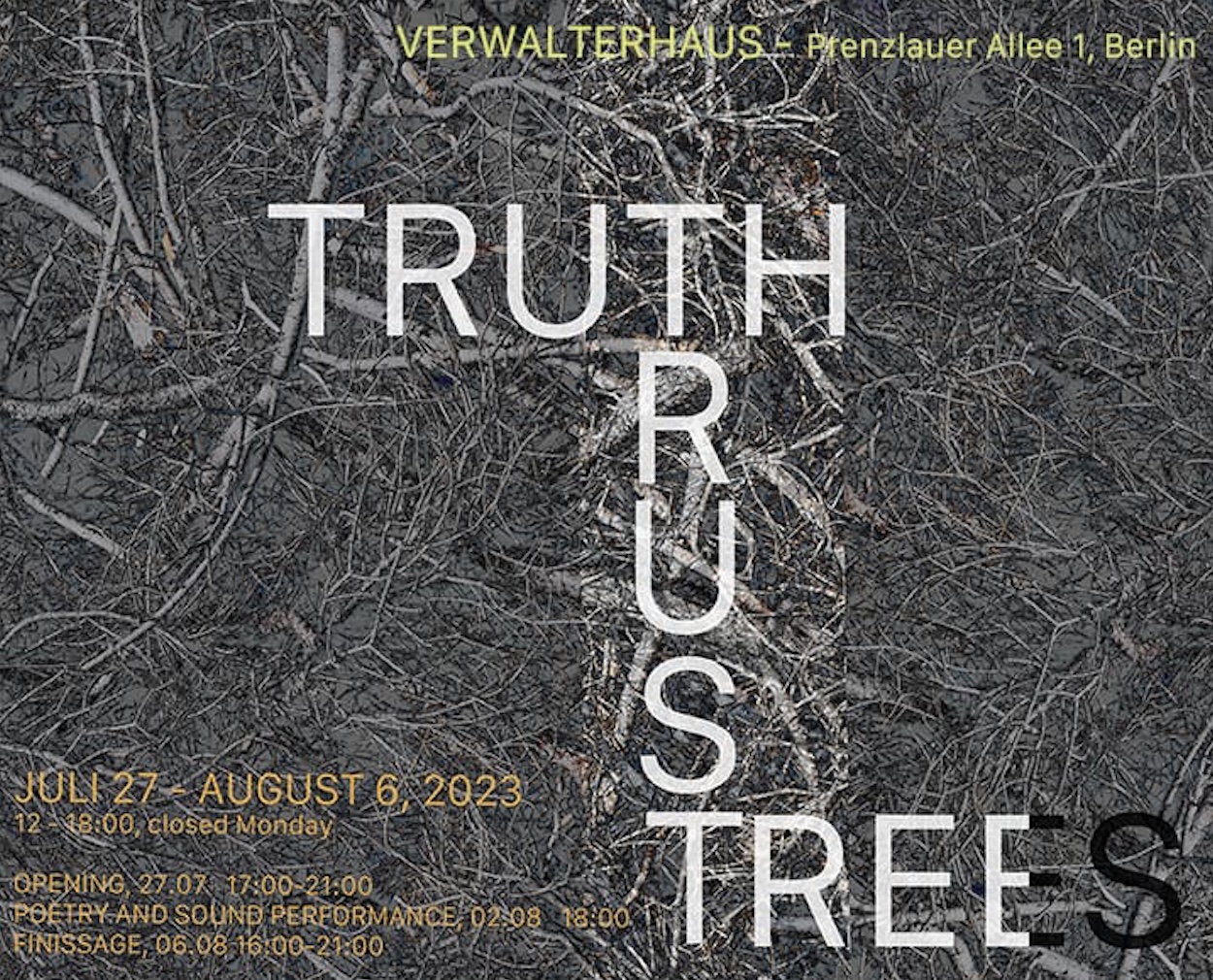
TRUTHTRUSTTREES
FEATURING:
Alena Grom, Verena Issel, Laura J. Lukitsch, Sonya Schönberger, Nina E. Schönefeld, Benjamin Heim Shepard, Caroline Shepard, Andreas Templin, Philip Topolovac, Magaly Vega
Curated by Caroline Shepard & Benjamin Heim Shepard
OPENING: 27 July @ 6-10pm
With Movable Performance by Patrick Jambon @ 6-8pm
& Musical Intervention by Andreas Templin: Aurorhytmica Hymns // Extended Piano (Drone/Doom) @ 8:30pm
POETRY & SOUND: 2 August @ 6-8pm
“How Do We Love This World“: Sound Performance and Guided Cemetery Walk by Laura J. Luetisch,
“Roses of Resistance”: Reading by Federico Hewson,
& A Celebration of Trees with Poetry from Ben Shepard and Max Haivenm
FINISSAGE: 6 August @ 4-8pm
Raise money for Ukraine! Unique poster from Ukrainian artist Alena Grom will be for sale. Proceeds will be donated.
Caroline and Ben Shepard say “Adieu” to Berlin and all the wonderful people they have met. Celebrate with live music by the band “Isaak” and D/VJ AntiDodi.
EXHIBITION: 28 July – 6 August 2023
Opening Hours: Tuesday – Sunday @ 12-6pm
@ Verwalterhaus
The Old Cemetery St. Marien – St. Nicolai
Prenzlauer Allee 1, 10405 Berlin
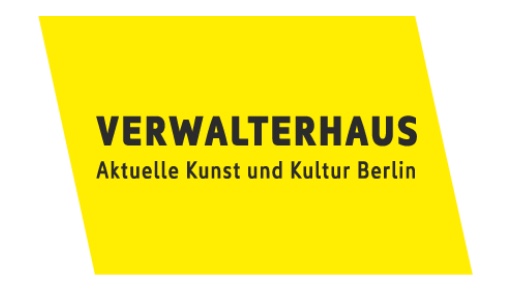
TRUTHTRUSTTREES
Bowie warned in 1972: we have five years.
The climate clock is ticking,
counting down to anthropocene.
At the Verwalterhaus, by the entrance of the St. Marien-St. Nikolai cemetery, a story takes shape between past and prologue. We see majestic trees and resting graves, while across from us are shopping malls and big box stores—a tidal wave of identical details encroaching from Alexanderplatz. Yet, the ghosts resist and push back. Five years was so many years ago. We’re on borrowed time. Mankind can no longer act with impunity. TRUTHTRUSTTREES is an exhibition of ten artists from around the world linking the relentless destruction of the climate, nature and women’s bodies to the ticking clock of unsustainability.
In the most recent Volkswahl, Berliners agreed to turn down the dependence on gas for heat, but not give up cars. In NYC, public spaces are sacrificed to development greed. In the Ukraine concrete and metal pile up around destroyed lives. All over domestic violence claims a shocking multitude of women’s lives with little legal and historical consequence. Germany is losing thousands of hectares of forest due to climate change. From Gruenheide to East River Park to the Amazon, the war on trees is raging, despite a world wide battle for sustainable cities, to stop rising tides, protect nature and house displaced peoples.
Yet, cars continue to pollute, people produce unmeasurable amounts of waste, and the WAR MACHINE remains the biggest polluter. 80 years after WW2 the same mountains of debris that lie buried under all major German cities, pile up in the Ukraine. Female bodies continue to be violated as collateral damage and landmines continue to maim for generations, as radioactive pollutants contaminate the land, air, and water. Once more, paralyzed masses become dangerously polarized. Truth is in question, but without established „truths“ how do we move forward? While simultaneously dystopian interventions of Artificial Intelligence subvert authenticity, and we wonder: who can we trust?
WE FACE A CHOICE: consume more, add more cars and fossil fuels, shop ourselves to death, hate those we are tasked to love and watch tides rise. OR become sustainable, open green spaces, see others as ourselves, use non-polluting transportation, treasure all people and end wars. When does it change? When we demand it. This is the decisive task.
Come celebrate the trees. Gardens are the future of cities! Decarbonize! Unplug! Destroy cars! Make art! We can do a lot. Celebrate life under the drone of climate doom! Gaia is calling.
– Caroline Shepard
[Click on the name of each artist to see the bio and the work description below.]
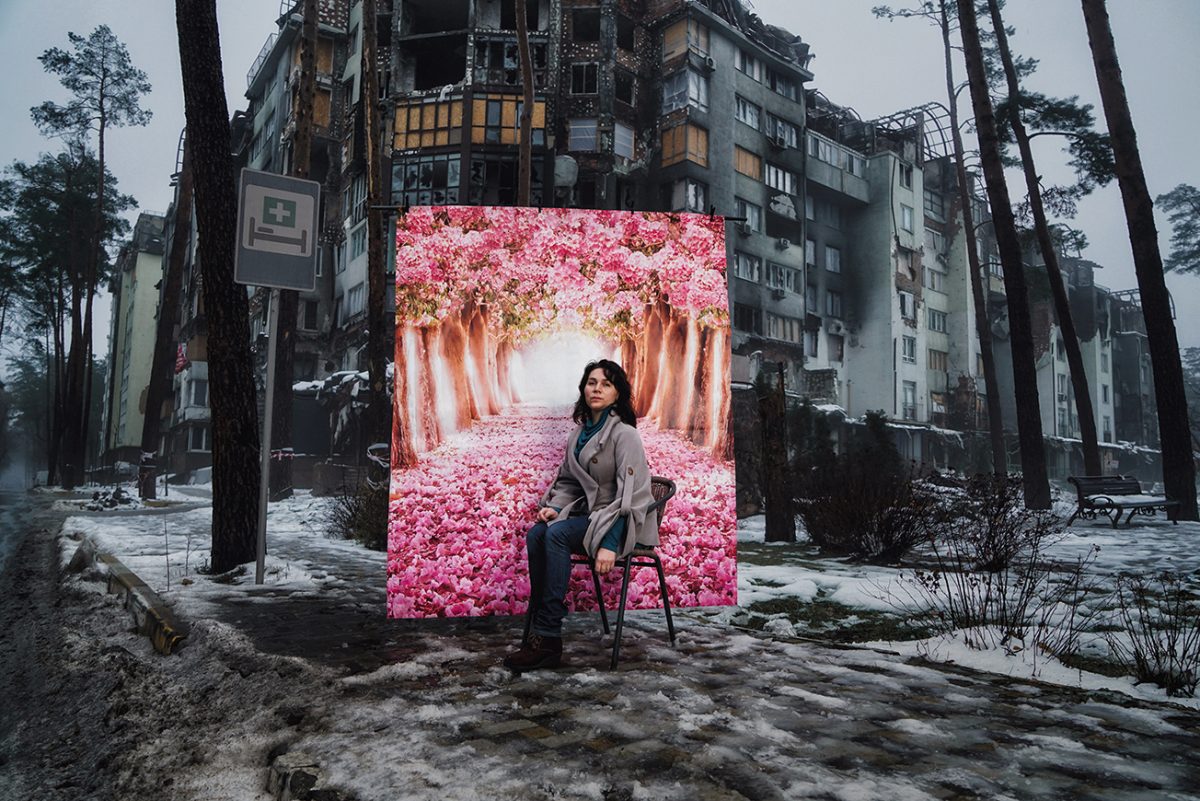 |
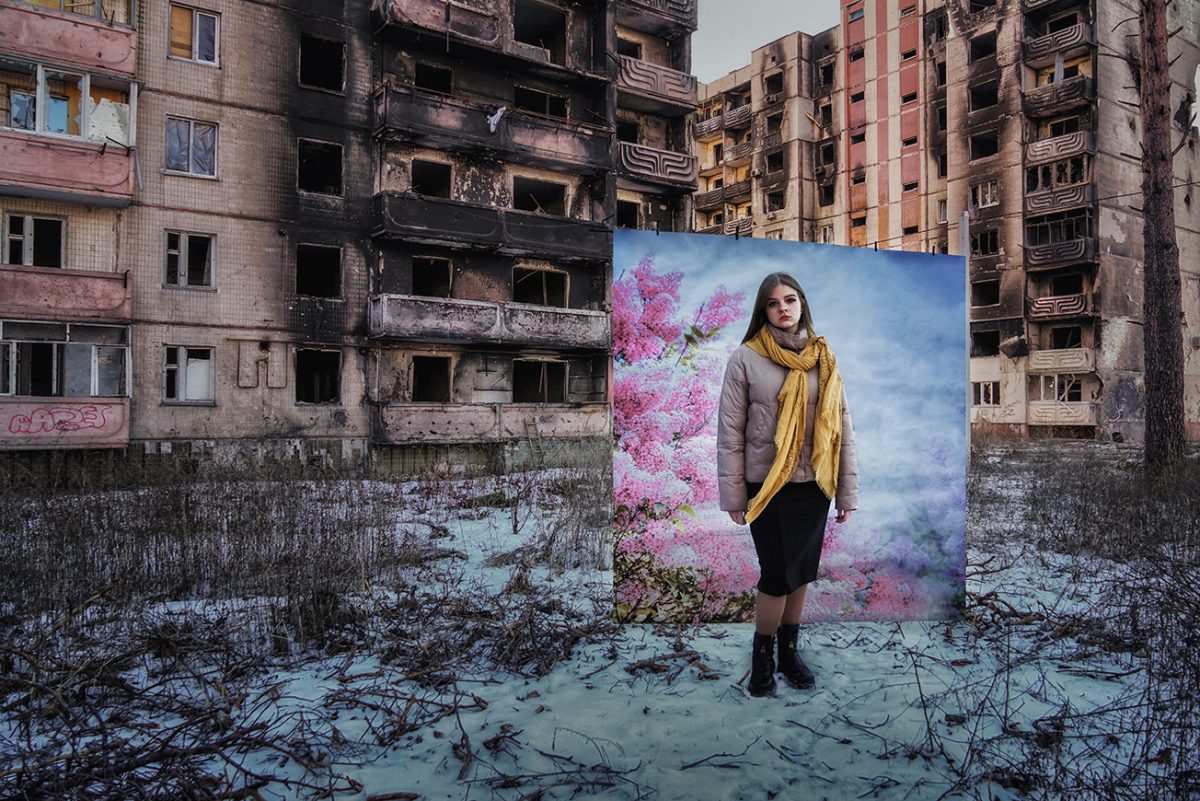
|
|
Boucha (2023), photograph I work at the intersection of conceptual photography and social reporting. Mastering the visual language of conceptual photography, I could not help addressing matters that concern me directly: shoots not the war in Donbas, but the way society interacts with war and what is left behind it. The themes of work were life in the front-line territories, military everyday life, the life and lifestyle of immigrants and refugees. By creating a series about the war, I tell the world about the problems of my native region, eastern Ukraine, where hostilities have taken place since 2014. The focus is on ordinary people who find themselves in difficult social and political conditions. My photos are an attempt to look at war differently, stripping it of the pathetic patina of a defense mission or heroic struggle. [Alena Grom] |
Alena Grom (b. 1976 in Donetsk, Ukraine. Lives and works in Kyiv, Ukraine.) < < https://alenagrom.com > > In April 2014, Alena Grom was forced to leave her home in Donetsk due to military events. Grom works at the intersection of social reporting and conceptual photography. The artist sees her “mission” in highlighting the lives of people who find themselves in the military zone. Her photographs are not illustrations of pity or grief, but a statement of life. Life in spite of everything is one of the main themes of the artist. Alena Grom is a finalist of LensCulture Portrait Awards UK, YICCA International Contest of Contemporary Art, Kaunas Photo Star Lithuania, Slovak Press Photo, The Tokyo International Foto Awards. Exhibited in Europe, USA, Japan, and more. |
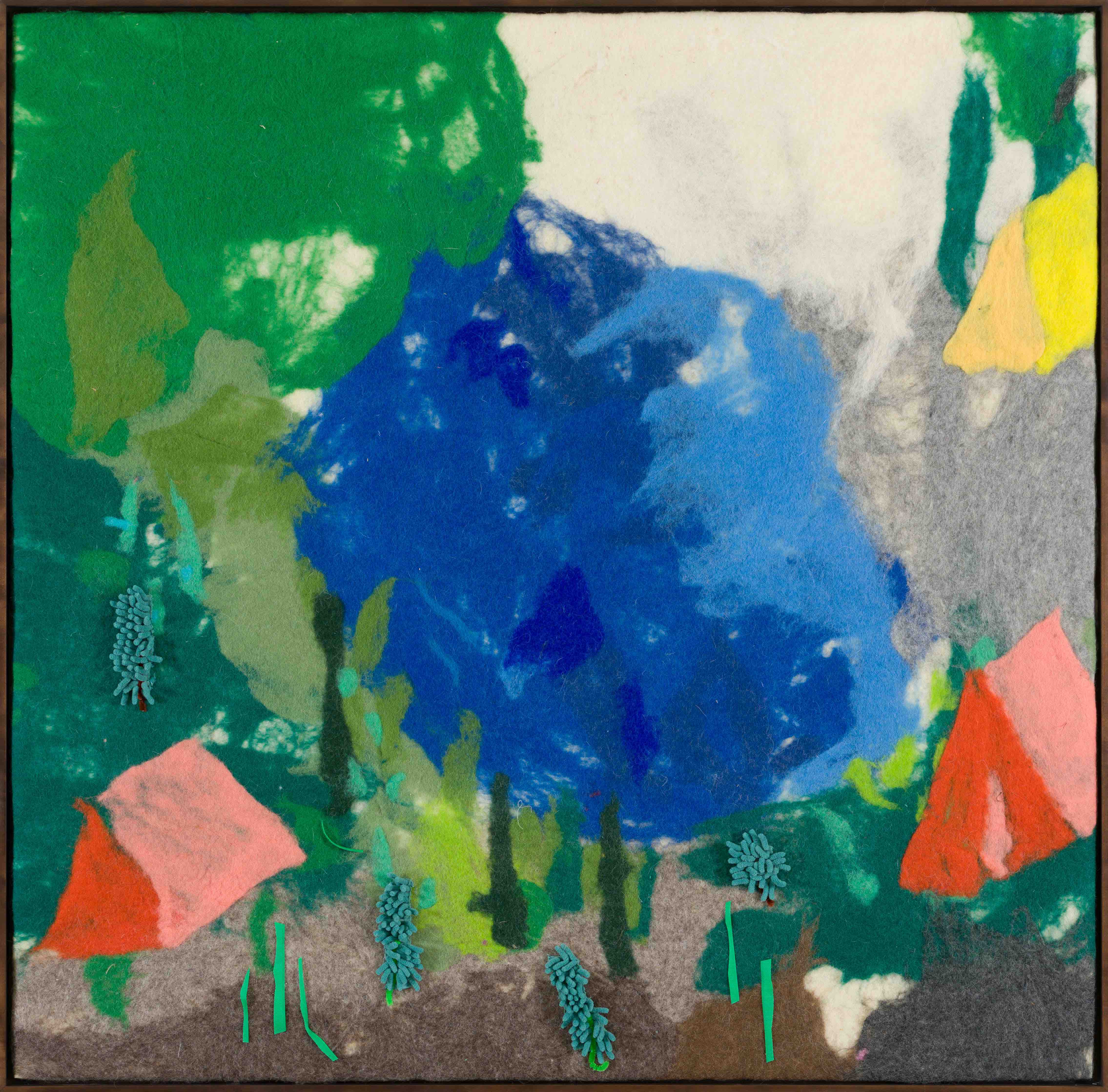 Heimat, trotz euch II / Homeland, Despite You II (2022) Hand felted sheep wool with velcro and mop, 93.5 x 120.5 cm Verena Issel shows two works in the exhibition. Both are made from hand felted and hand coloured sheep wool. They depict tents in nature. Are the tents for recreation? Or are they refugee tents? And will we all be climate refugees soon? The work “Why” invokes Lorem Ipsum, which has been the graphic industry’s standard dummy text ever since the 1500s, when an unknown printer took a galley of type and scrambled it to make a type specimen book. It has survived not only five centuries, but also the leap into electronic typesetting, remaining essentially unchanged. Buuuuut, it is a piece of a Cicero text, where he speaks about DOLOREM IPSUM- the pain itself. |
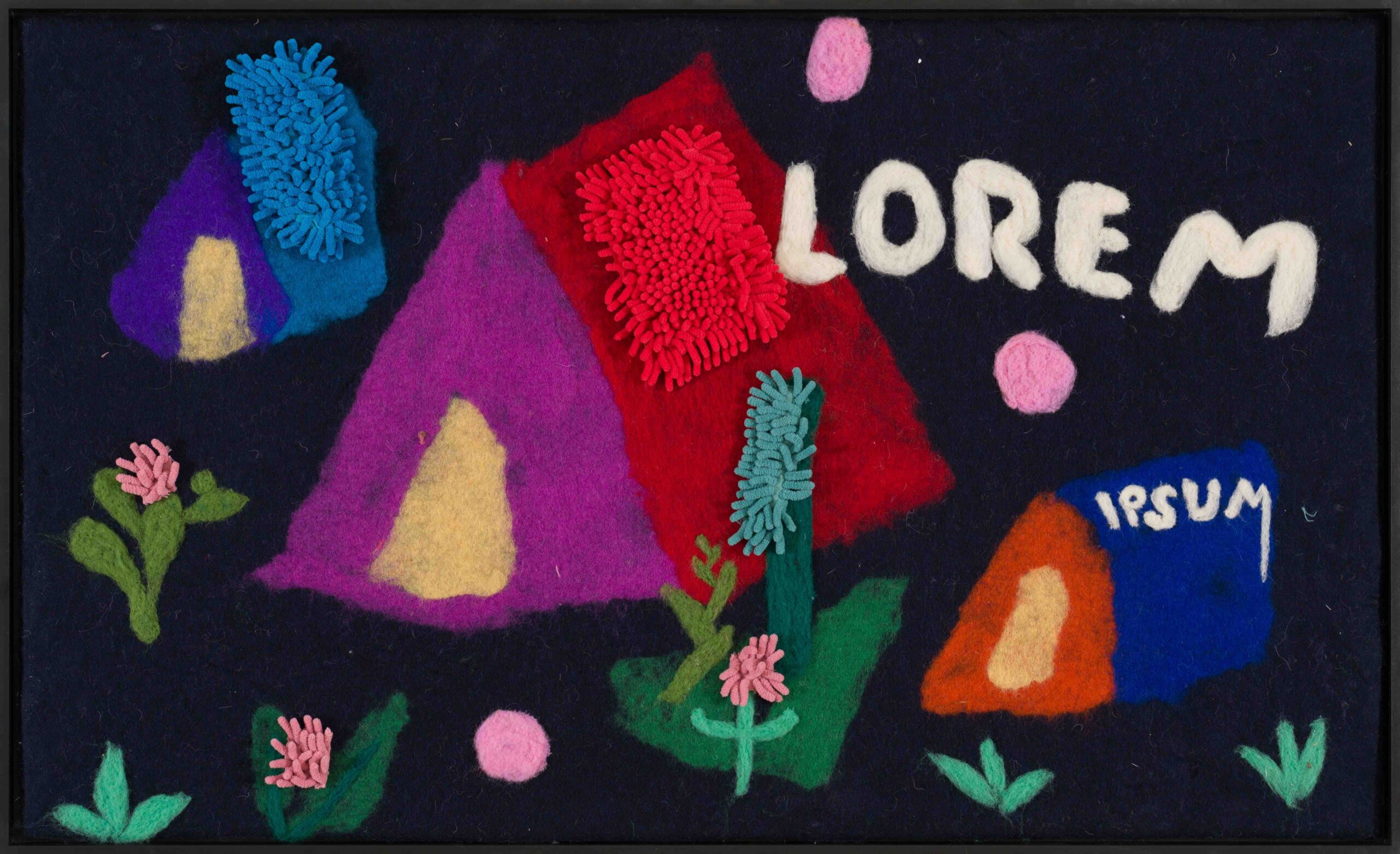 Why (2022), Hand felted sheep wool with mop, 73.5 x 120.5 cm
Verena Issel (b. 1982 in Munich, Germany. Lives and works in Hamburg and Berlin, Germany.) < < http://www.verenaissel.com > > Verena Issel was born in Munich, Germany and now works between Berlin and Hamburg Germany. Issel received a Master of Arts in Classical Philology (Latin/Ancient Greek), and a Master of Fine Arts from Hochschule für Bildende Künste Hamburg (HfBK). She completed her postgraduate program at China Academy of Art in Hangzhou, China. Although primarily revolving around textile arts, much of her work is interdisciplinary and spans across various media such as sculpture and installation as well as textile, fiber arts and others. Verena has participated in numerous solo and group exhibitions, with her works shown in various countries throughout the world, including Germany, Japan, South Korea, Russia, and Portugal. She has received numerous grants and prizes, including the prestigious Lothar-Fischer-Preis in 2021. Additionally, Verena has been actively participating in artist residencies abroad, with experiences in cities such as Vladivostok, Seoul, Shanghai, and Yokohama. Verena’s work engages in disparate contemporary issues of interest told through unique combinations of media and cutting edge yet imaginative practices, creating thought-provoking experiences for her audiences. |
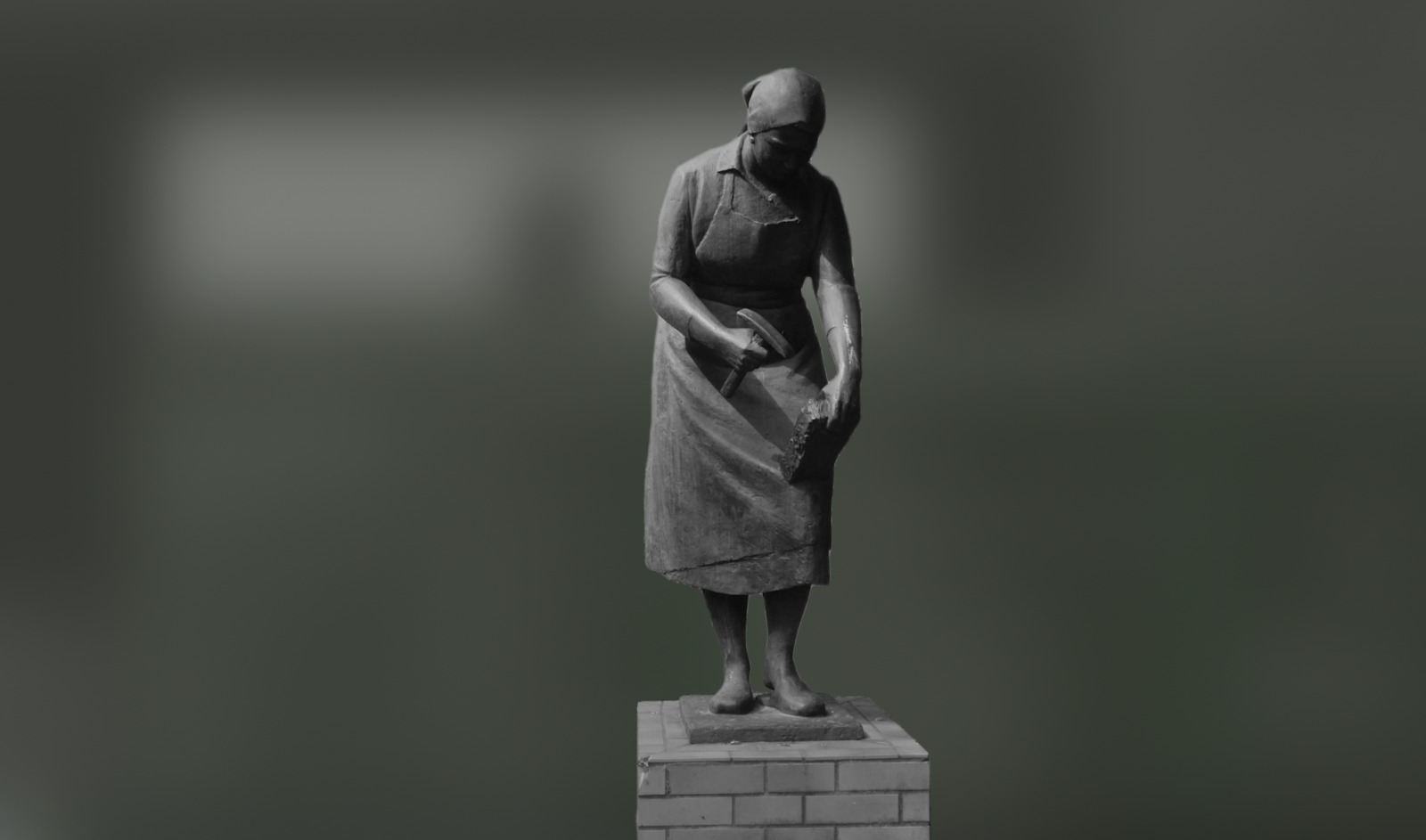
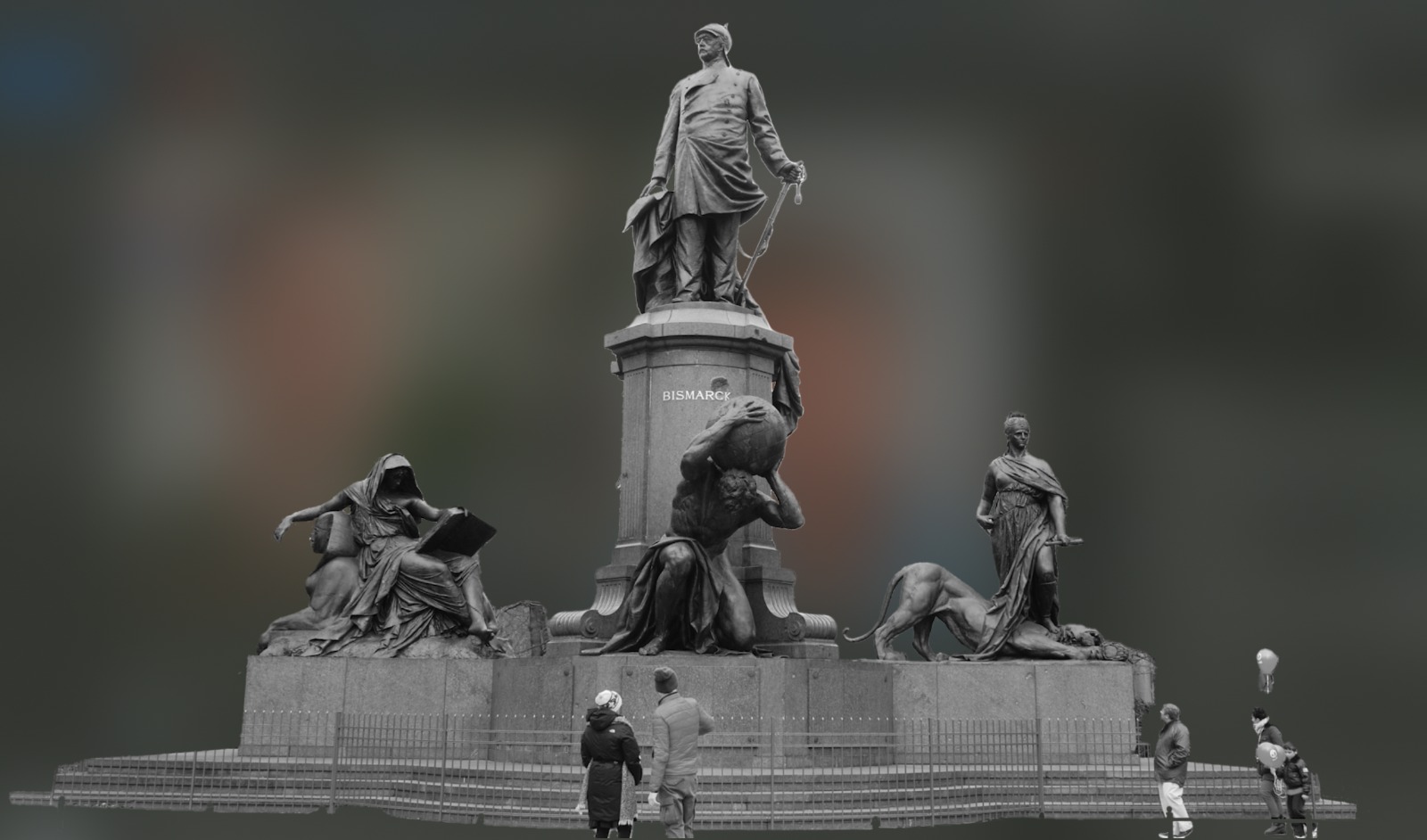
|
Bodies and Heroes (2023), mixed media installation How Do We Love this World? If Mushrooms Could Talk and Trees Could Love (2023), sound / audiovisual installation |
Laura J. Lukitsch (Lives and works in Berlin, Germany.) < < https://www.laurajlukitsch.com > > |
|
Over the course of my year filming in parks, I was struck by the images we see in public on a daily basis. The sheer number of male versus female figures. The bodies we view as heroic and those we see as weak. The messages conveyed by these bodies. Before radio and television statues were a way of advertising ideas, from religious morals to national loyalty. Many unspoken messages exist in the form of statues in the public spaces of Berlin. Visions of colonialism, mythological moral tales, memories of struggle and loss. While Berlin has invested in telling sharing its history but only specific, government sanctioned narratives. This project aims to expand the narratives we see in public. [Laura J. Lukitsch] |
Laura J Lukitsch is a filmmaker, video artist, and story consultant. Her work creates spaces for audiences to experience different perspectives of our collective stories. Her first feature documentary, Beard Club (2013) is a film about the social politics of facial hair. Park Project Berlin (2017-ongoing) examines our public realm. Laura’s interest includes social change, the power of intersectional narratives, and ways we can bring new voices into mainstream consciousness. She helps artists struggling to tell their stories reframe their inner and outer narratives and get their work seen. In a world where attention has become a commodity, Lukitsch aims to create spaces where ‘othered’ humans and non-human actors can be seen, felt, and heard. In her practice, she uses the tools of video, photography, documentary interviews, text, and sound design to develop immersive audio/visual experiences. She creates polyphonic portraits, questioning norms, and honoring endangered people, beings, and places. Through this approach she examines cultural and place-based phenomena through layers of multiple voices and perspectives, aiming to question and decenter dominant narratives, and give space to alternative frames of reference through collective narratives. |
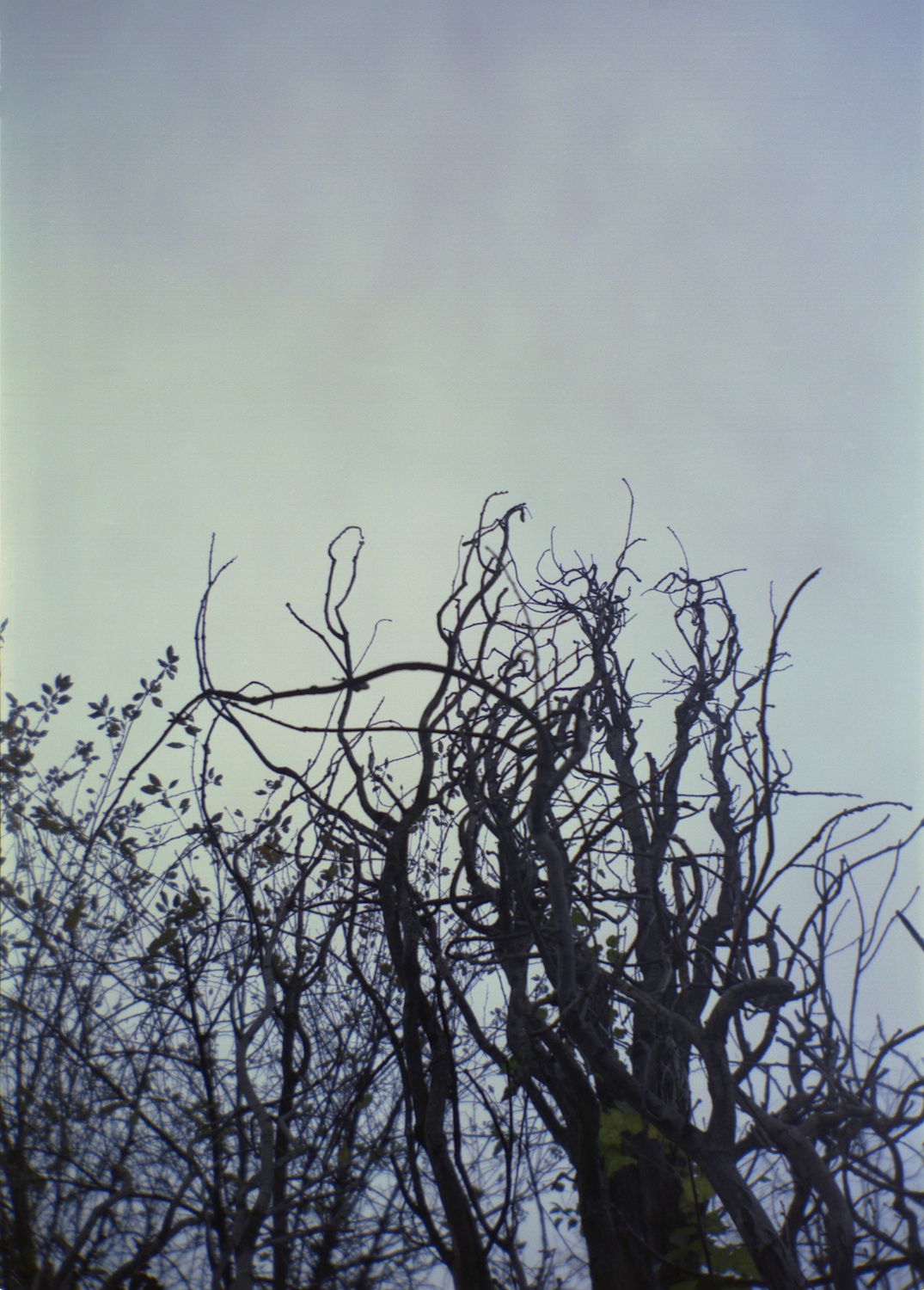
|
Den Trümmern zum Trotze / Despite the Ruble (2014), photography In Berlin there are 14 hills made up of the rubble left by the war. There, one can walk directly on top of the intangible consequences of the destruction. Under your feet lurks the city of before, unknown. The will to survive, to be remembered, is mirrored in the remnants which reveal themselves and the nature that grows above it. With an Agfa box camera and expired film, I attempted to capture it. [Sonya Schönberger]
|
Sonya Schönberger (b.1975. Lives and works in Berlin, Germany.) < < https://sonyaschoenberger.de > > Sonya Schönberger studied ethnology in Berlin and Zurich as well as experimental media design at the Berlin University of the Arts. Today she moves as an artist between the media of photography, installation, theatre, sound, publication and film. In her work, she primarily deals with biographical ruptures against a background of political or social upheaval, but also with the effects of colonial expansion on the flora and fauna. The source of her artistic exploration are the people themselves, who report on them in biographical conversations. This is how some archives were created, but also existing archives, some of them found, flow into her work. Five years ago, she created the Berliner Zimmer, a long-term video archive based on the stories of people in Berlin. In 2022 Sonya Schönberger was a Villa Aurora grantee from the Senate Department for Culture and Europe, Berlin. |
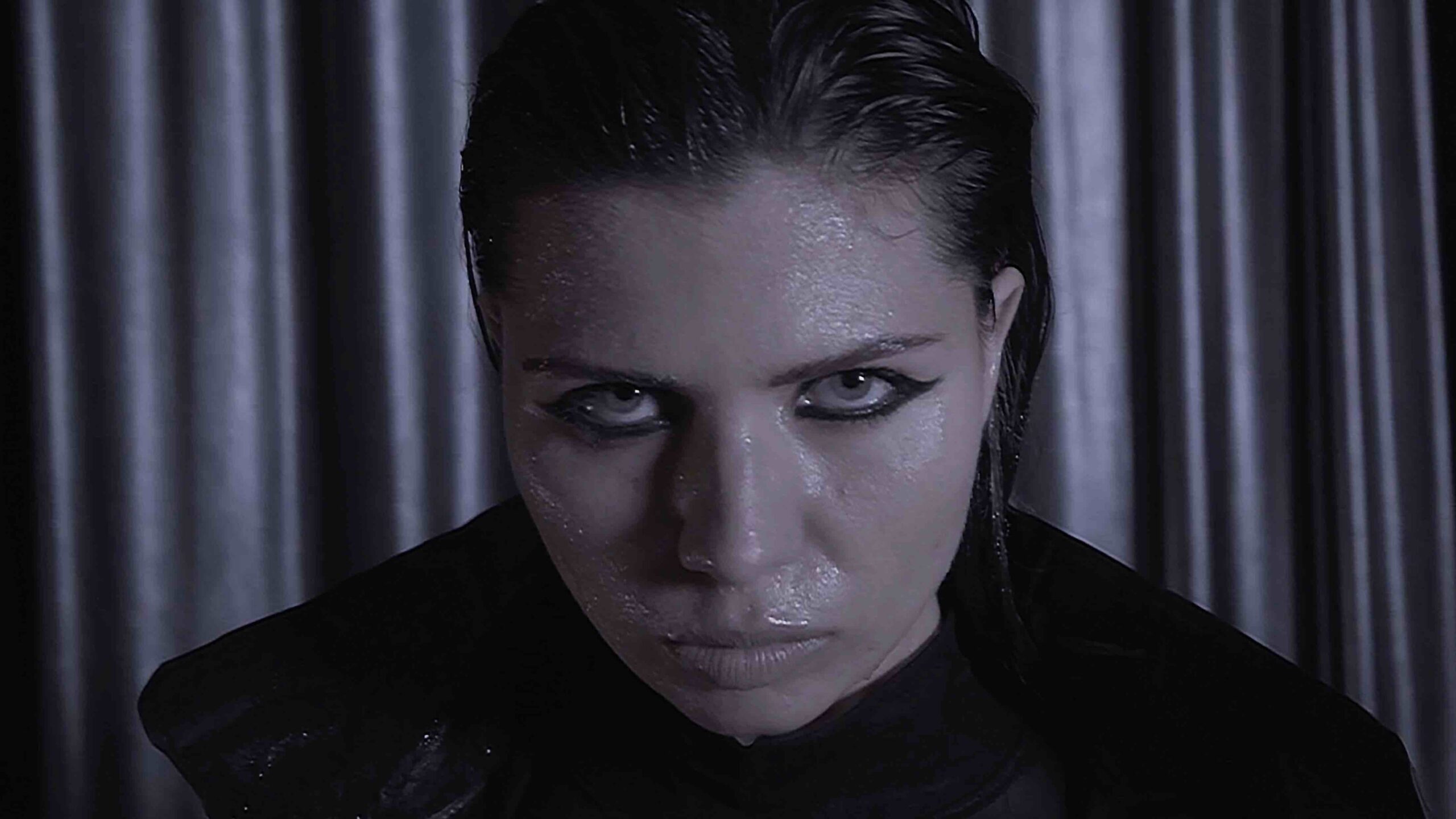
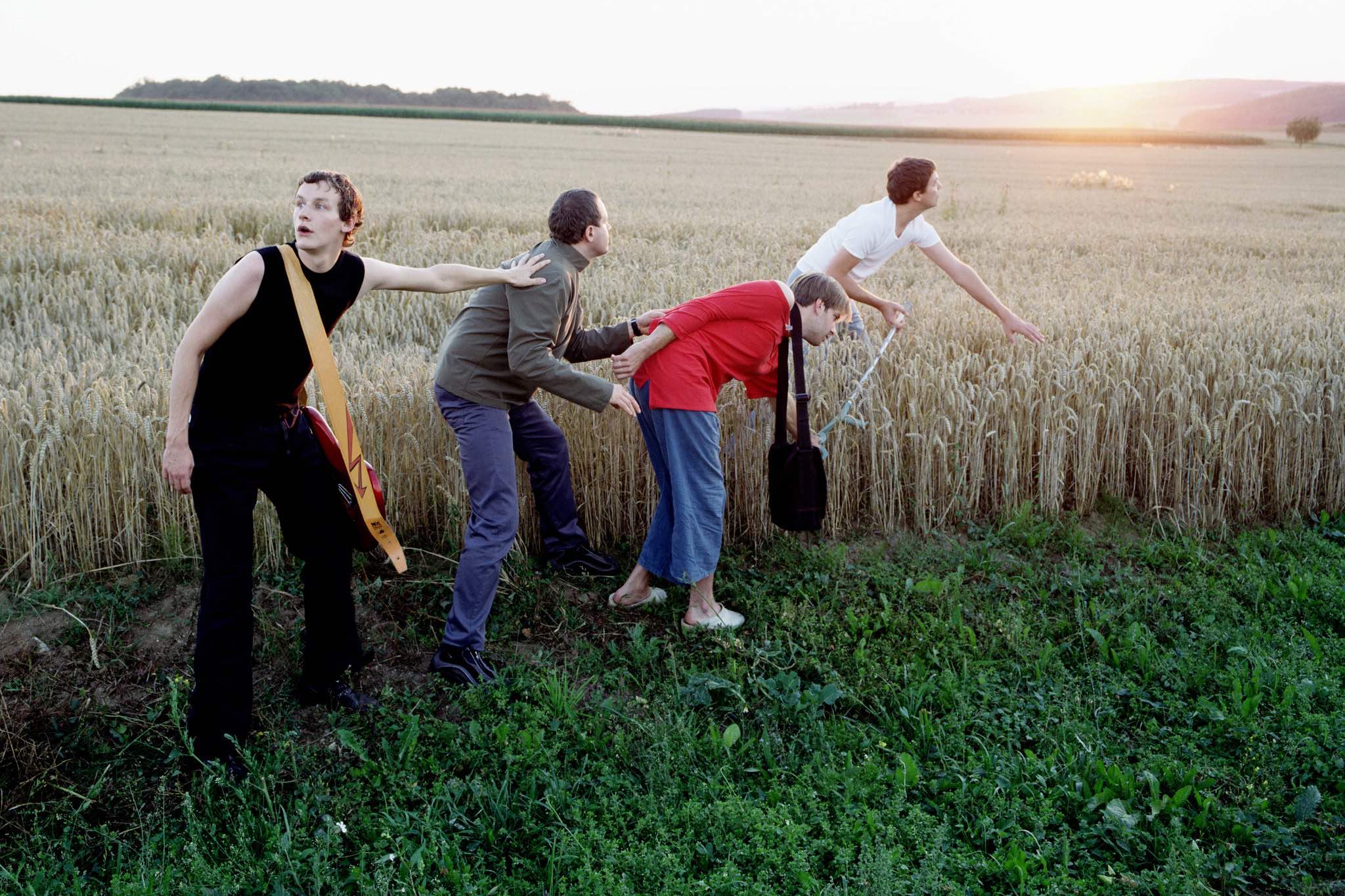
|


 Back to Homepage
Back to Homepage

